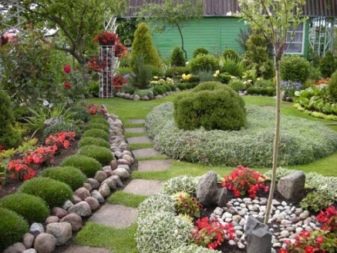Hey everyone, and welcome back to my channel! Today, we’re diving deep into the world of vertical website layouts.
Now, you might be thinking, “Isn’t that just the way most websites are laid out?” And you’d be right, for the most part. But there’s a lot more to it than meets the eye.
In this video, we’ll be exploring the subtle nuances and unique characteristics of vertical layouts. We’ll cover everything from the psychology behind scrolling to the best practices for creating a user-friendly and visually appealing experience.
So, whether you’re a seasoned web designer or just starting out, this video is for you. Let’s get started!
- Definition: A site with a slope of less than 3%.
- Advantages:
- Easier to plan and develop.
- More options for landscaping and hardscaping.
- Less expensive to build on.
- Disadvantages:
- May require more drainage to prevent water from pooling.
- May have less privacy than a sloped site.
- Definition: A site with a slope of 3% or more.
- Advantages:
- Can offer stunning views.
- Can provide more privacy than an even site.
- Can be more energy-efficient, as the slope can be used to orient the home for passive solar heating.
- Disadvantages:
- More challenging to plan and develop.
- May require more expensive construction techniques.
- May have limited options for landscaping and hardscaping.
- Consider the drainage: Make sure to install proper drainage to prevent water from pooling on the site.
- Think about privacy: If privacy is a concern, you may want to plant trees or shrubs around the perimeter of the site.
- Be creative with landscaping: There are many ways to landscape an even site, so get creative and have fun!
- Work with the slope: Don’t try to fight the slope; instead, work with it. This will make your project easier and more successful.
- Consider retaining walls: Retaining walls can be used to create level areas on a sloped site.
- Use terracing: Terracing is a great way to create multiple levels on a sloped site.
- Be mindful of erosion: Erosion can be a problem on sloped sites, so be sure to take steps to prevent it.
- Gather information: Collect information about the site, such as the slope, soil type, and vegetation.
- Develop a concept: Decide what you want to achieve with your project. Do you want to create a formal or informal space? Do you want to maximize privacy or views?
- Create a rough sketch: Sketch out your ideas on paper. This will help you to visualize your project and make sure that it is feasible.
- Refine your design: Once you have a rough sketch, start to refine your design. This includes adding details such as plants, hardscaping, and structures.
- Get feedback: Show your design to others and get their feedback. This will help you to identify any potential problems and make sure that your design is functional and aesthetically pleasing.
- Finalize your design: Once you are happy with your design, finalize it and start construction.
Creating a vertical layout for your site can be a challenging but rewarding task. By following the tips in this video, you can create a beautiful and functional space that you will enjoy for years to come.
A sloping site can be a challenge, but it also presents an opportunity to create a unique and interesting landscape. When designing a vertical layout for a sloping site, it’s important to consider the following factors:
- The degree of the slope: The steeper the slope, the more challenging it will be to create a functional and attractive landscape.
- The soil type: The type of soil will affect how well water drains and how much support the slope needs.
- The amount of sunlight: The amount of sunlight will affect what types of plants will thrive in the landscape.
- The desired use of the space: The desired use of the space will affect the layout of the landscape. For example, if you want to create a patio or deck, you will need to level out a portion of the slope.
Pavement can be used to create paths, patios, and driveways on a sloping site. When choosing pavement materials, it’s important to consider the following factors:
- The slope of the site: The steeper the slope, the more important it is to choose a material that is slip-resistant.
- The amount of traffic: The amount of traffic will affect the durability of the pavement.
- The desired aesthetic: The desired aesthetic will affect the color and texture of the pavement.
Drainage is essential for preventing erosion and water damage on a sloping site. When designing a drainage system, it’s important to consider the following factors:
- The amount of rainfall: The amount of rainfall will affect the size of the drainage system.
- The type of soil: The type of soil will affect how well water drains.
- The slope of the site: The steeper the slope, the more important it is to have a good drainage system.
A vertical layout diagram is a drawing that shows the different levels of a site. This diagram is used to plan the layout of the landscape, including the placement of pavement, drainage, and plantings.
When creating a vertical layout diagram, it’s important to include the following information:
- The contours of the site: The contours show the different elevations of the site.
- The location of existing features: The location of existing features, such as trees, buildings, and utilities, should be shown on the diagram.
- The proposed layout of the landscape: The proposed layout of the landscape should be shown on the diagram, including the placement of pavement, drainage, and plantings.
By following these tips, you can create a vertical layout for your sloping site that is both functional and attractive.















































